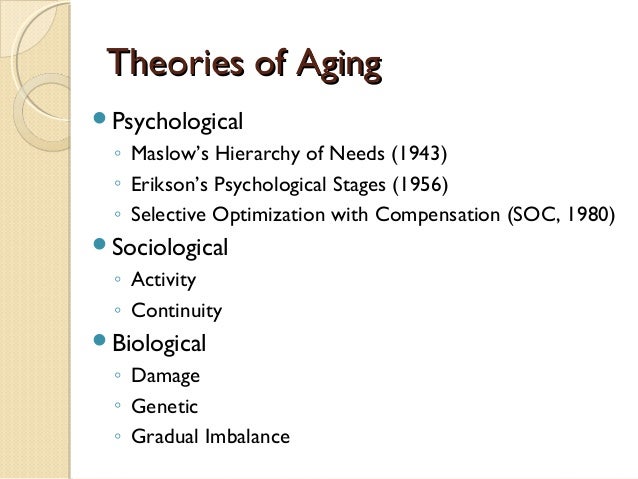Autoimmune theory which states that the immune system is programmed to decline over time leading to an increased vulnerability to infectious disease and thus ageing and death. The theory of aging is still well aligned with what we know about the aging process even with advancements made in recent years.
 Pin By Gerontology On Theories Of Aging Systems Theory Theories Of Aging Immune System
Pin By Gerontology On Theories Of Aging Systems Theory Theories Of Aging Immune System
This theory suggests that biological aging is due to the fact that normal cells cannot divide indefinitely this is known as the hayflick limit and is evidenced in cells studied in test tubes which divide about 40 60 times before they stop bartlett 2014.

Theories of aging. The neuroendocrine control or pacemaker theory explains aging as a programmed decline in the functioning of the nervous endocrine and immune systems de la fuente 2008. Disengagement theory views aging as a process of mutual withdrawal in which older adults voluntarily slow down by retiring as expected by society. The cross linking theory of aging is also referred to as the glycosylation theory of aging.
Two major theories explain the psychosocial aspects of aging in older adults. One of the most recent theories regarding gene damage has been the telomerase theory of aging. Gene theory which considers aging to be the result of a sequential switching on and off of certain genes with senescence being defined as the time when age associated deficits are manifested.
In this theory it is the binding of glucose simple sugars to protein a process that occurs under the presence of oxygen that causes various problems. Once this binding has occurred the protein becomes impaired and is unable to perform as efficiently. Describe the strengths and limitations of three main aging theories.
Activity continuity and disengagement theories. Nevertheless one of the most popular theories is the free radicals or oxidative stress theory of aging which hypothesizes that an accumulation of reactive oxygen species hereafter ros falls. Proponents of disengagement theory hold that mutual social withdrawal benefits both individuals and society.
It is not that the cells die. First discovered by scientists at the geron corporation it is now understood that telomeres the sequences of nucleic acids extending from the ends of chromosomes shorten every time a cell divides. Neuroendocrine theory this theory holds that aging is programmed in the brain at birth and these cells directs the process by hormonal and neural influences.
Proponents of this theory point to the control of puberty which is initiated by the hypothalamus through the pituitary hormones as proof that the brain can be programmed to function in this way. Provide a broad definition for psychosocial theories of aging. This shortening of telomeres is believed to lead to cellular damage due to the inability of the cell to duplicate itself correctly.
Instead they lose their ability to reproduce a process referred to as replicative senescence.
Theories Of Aging Authorstream
 A Synopsis On Aging Theories Mechanisms And Future Prospects Abstract Europe Pmc
A Synopsis On Aging Theories Mechanisms And Future Prospects Abstract Europe Pmc
 Pdf Invited Review Theories Of Aging Semantic Scholar
Pdf Invited Review Theories Of Aging Semantic Scholar
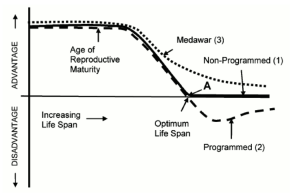 Theories Of Ageing Physiopedia
Theories Of Ageing Physiopedia
 Theories Of Aging Theories Of Aging Nursing Theory Theories
Theories Of Aging Theories Of Aging Nursing Theory Theories
 Chapter 5 Theories Of Aging And Physical Changes Ppt Download
Chapter 5 Theories Of Aging And Physical Changes Ppt Download
 Ppt I Theories Of Aging Powerpoint Presentation Free Download Id 6033208
Ppt I Theories Of Aging Powerpoint Presentation Free Download Id 6033208
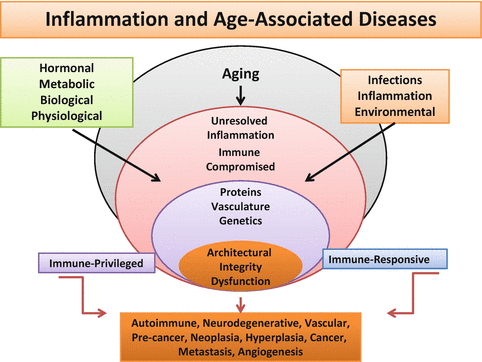 Theories Of Aging And Chronic Diseases Chronic Inflammation An Interdependent Roadmap To Age Associated Illnesses Springerlink
Theories Of Aging And Chronic Diseases Chronic Inflammation An Interdependent Roadmap To Age Associated Illnesses Springerlink
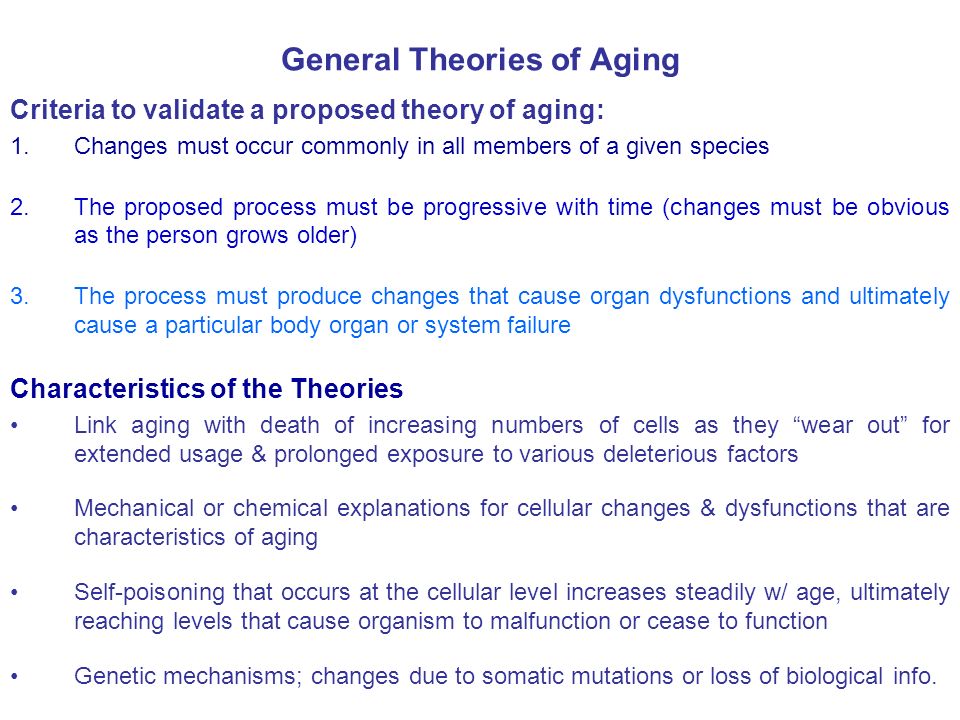 Theories Of Aging Chapter 2 Ppt Download
Theories Of Aging Chapter 2 Ppt Download
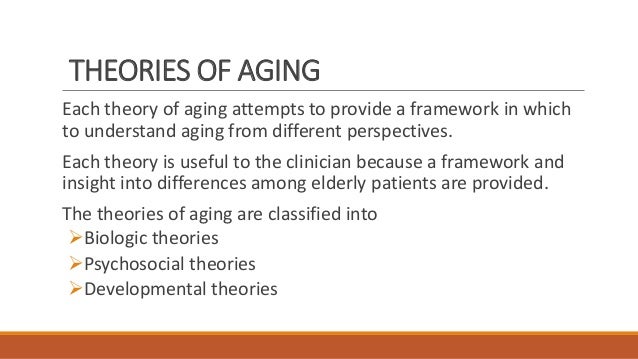 Concepts And Theories Of Aging
Concepts And Theories Of Aging
